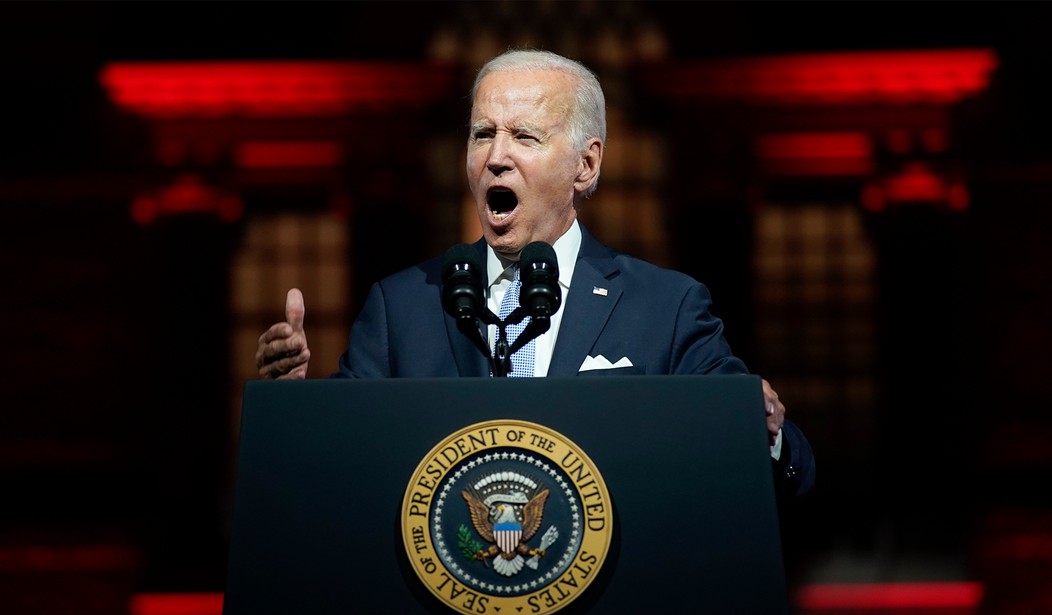And not just in the Emerson College poll series either, but it may be more spectacular there. A month ago, it appeared that Democrats had staged a midterm rally of sorts. Joe Biden’s job approval had improved from 40/53 in July to 45/49 two months later. The Democrats’ generic ballot position had likewise risen from 41/47 in the spring to a dead tie at 45 in September.
And then …
The October Emerson College Polling national survey finds President Joe Biden with a 53% disapproval rating, and 39% approval. This reflects a six percentage point drop in Biden’s approval since last month, and a four percentage point increase in the president’s disapproval. …
On the generic congressional ballot, 46% of voters plan to support the Republican candidate and 41% the Democratic candidate. Since last month, congressional Republicans have increased their support by one percentage point, and Democrats have lost four percentage points.
“Among those who say they are ‘almost certain’ they will vote this November, congressional Republicans lead by ten percentage points, 51% to 41%. Among those who say they will only ‘probably’ vote, Democrats lead by eleven percentage points, 45% to 34%,” Kimball noted.
Emerson charts the changes in their press release, and the dramatic nature of changes in both series seems … curious, at least. To buy this as a real shift in opinion of this magnitude, one would have to find some sort of initiating event tied to it. But what happened in the past month that was so unusual and impactful that it would create a five-point swing in the generic ballot and a ten-point swing in the gap for Biden’s job approval?
Perhaps the reports two weeks ago on inflation played a role in the changes? That’s maybe a valid explanation, but all those reports did was note the continuing inflation rise that had taken place over the summer as well. The real news wasn’t an explosion of inflation, but the fact that inflation hadn’t improved at all. The passage of the so-called “Inflation Reduction Act” at the beginning of August may have raised expectations too high for an improvement, but this seems like a very large swing to just assign to disillusionment.
Besides, the voters have remained focused on inflation all along. That’s by far and away the most important issue in the Emerson poll as well. The people hit hardest by inflation are also those most likely to vote Republican, the survey finds to no one’s great surprise:
The economy remains the top issue in determining the Midterm Election vote for 44% of voters, followed by abortion acces [sic] (12%), and threats to democracy (11%).
A majority of voters (63%) have cut back on food or groceries this month, while 37% say they have not.
Kimball said, “Of the 63% who have cut back on food or groceries this month, 60% disapprove of the job Biden is doing as president, 52% plan to vote for the Republican congressional candidate in the midterm election.”
It’s the economy, stupid, especially in the middle of a stupid economic policy environment. That hasn’t changed dramatically either, though.
So why the dramatic shift, in this polling series and others? The best guess: Pollsters have made adjustments in their last iterations for the political environment that has existed all along. The Joe Biden bounce and Democratic comeback narratives from polling likely never existed at all, except in the editorial boards of America’s media outlets and Academia-based pollsters. The new narrative will be “Republican momentum builds toward the close,” but this looks more like belated recognition of the disaster than has unfolded for Democrats all along.








Join the conversation as a VIP Member